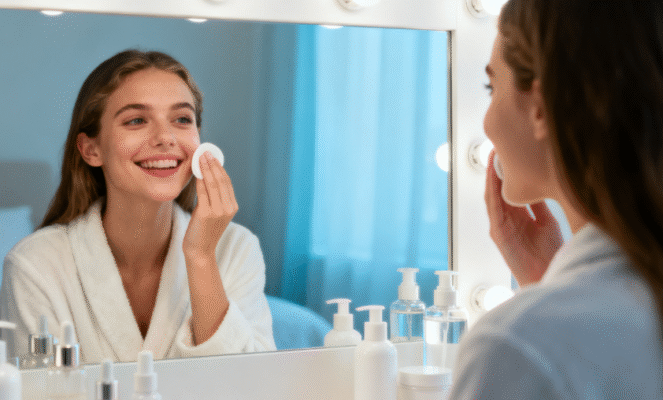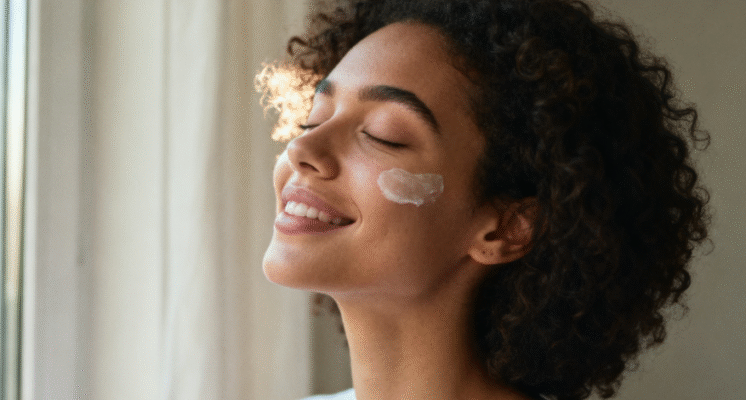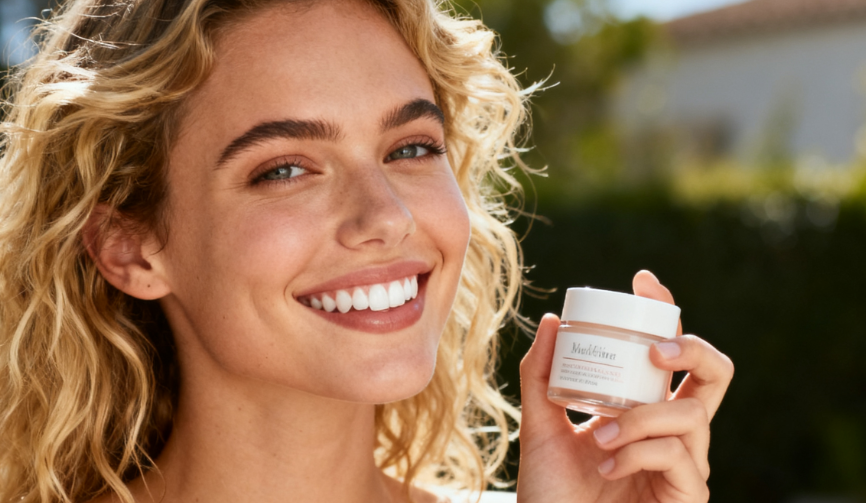In cosmetic formulation, the “Soaping Effect” is a common challenge.
Although it does not affect the efficacy of the product, it significantly compromises the consumer’s experience. This article will thoroughly analyze the strategies for resolving the “Soaping Effect” in emulsion systems, covering its nature, impact, and current and future solutions.
1. What is the “Soaping Effect” in Emulsion Systems?
1.1 The Nature of the “Soaping Effect”
First, let’s dispel a misconception. The “Soaping Effect” we refer to in cosmetic formulation is not the chemical reaction of fatty acids and alkali producing true soap. Instead, it refers to:
When the lotion or cream is applied and rubbed onto the skin, it forms visible white streaks, white film, or foaming (“lathering”). Furthermore, it is often accompanied by a noticeable sticky or gummy feeling, which leads to a poor consumer experience.
This phenomenon is most common in Oil-in-Water (O/W) emulsions or creams. Essentially, it is a physical manifestation resulting from the interaction between emulsifiers, thickeners, and the overall formula system.

1.2 Problems Caused by the Soaping Effect
While slight soaping does not impact the stability or function of the product, its effect on brand image is considerable.
Firstly, some consumers mistakenly believe that the white residue means the “product has not been absorbed by the skin” or that the “formula is crude, or the quality is poor.”
Secondly, the sticky feeling and white film reduce the product’s refreshing sensation, especially conflicting with brands positioned as “fast-absorbing” or “clear/transparent.” Brands focusing on this positioning must pay special attention to minimizing the soaping effect.
In summary, in today’s user-experience-driven market, the “Soaping Effect” can be seen as detrimental to the brand image and affects consumer repurchase rates.
1.3 Analysis of Phenomenon Susceptibility
Compared to other compositions, the soaping effect is more likely to occur in natural and organic skincare formulas.
Firstly, these formulas often use natural-source surfactants, such as glycerides and plant phospholipids. These ingredients are gentle and biodegradable, particularly friendly to sensitive skin. However, due to their strong lipophilic and hydrophilic structure, they tend to adsorb air and stabilize micro-bubbles—meaning they are more prone to causing the soaping phenomenon.
Furthermore, natural colloids like Xanthan Gum, Locust Bean Gum, and Guar Gum provide viscosity, and their network structure can effectively trap air, making it difficult for bubbles to escape.
Lastly, when the emulsifier content exceeds the required emulsification ratio, the free emulsifier in the water phase is more likely to “entrap bubbles” when rubbed. Therefore, cosmetic formulators need to repeatedly test the emulsifier ratio to achieve a good balance.
2. How Are Manufacturers Currently Solving This Problem?
Generally, to improve skin feel and eliminate soaping, modern formulators address the issue from two dimensions: structural adjustment of the emulsion system and raw material optimization.
| Solution Strategy | Technical Means (Ingredients/Process) | Core Mechanism of Action |
| Emulsifier Ratio Optimization | Reduce main emulsifier quantity; introduce Fatty Alcohols (e.g., Cetyl Alcohol) or Monoglycerides as structural conditioners. | Fatty alcohols form a lamellar crystal structure that physically restricts free emulsifiers; improves shear-thinning and reduces lathering upon application. |
| Oil Phase Polarity Adjustment | Use Medium-Low Polarity Esters (e.g., Caprylic/Capric Triglyceride) or Squalane to replace some high-polarity natural oils. | Enhances oil spreadability and lubricity; reduces the likelihood of forming “soap-like” structures with natural emulsifiers. |
| Natural Silicone Replacements | Incorporate Natural Silicone Alternative Esters (e.g., Coco-Caprylate/Caprate or glycosidic esters). | Possesses low surface tension, accelerating product spread on the skin surface; reduces friction, minimizing air entrapment and white film formation. |
| Precise Thickener Co-Formulation | Limit usage of strong structural colloids (e.g., Xanthan Gum, <0.3%); co-formulate with milder colloids (e.g., Hydroxyethylcellulose HEC). | HEC forms a smooth gel network lacking strong foam-stabilizing properties; reduces bubble entrapment and stabilization, eliminating stickiness. |
| Process & Powder Assistance | Add a small amount of functional powders (0.5-1%), such as Bamboo Silica; optimize the mixing process to avoid air incorporation. | Powders adsorb free surfactants and provide a silky feel; process control minimizes initial bubble volume, solving the issue at the source. |

Future R&D will increasingly focus on “intelligent” and “customized” system structure design to completely eliminate the soaping problem:
3.1 Novel Bionic Emulsification Systems
Future emulsifiers will focus on the development of “Layered Liquid Crystal Emulsifiers” systems.
- Technical Advantage: This type of emulsifier forms a highly ordered liquid crystal structure, firmly fixing oil and water within the dense layered structure.
- Anti-Soaping Mechanism: This compact structure can physically lock the emulsifier, making it difficult to migrate to the water phase surface to stabilize bubbles. This fundamentally prevents the soaping phenomenon while providing a luxurious, creamy skin feel.
3.2 Smart Anti-Foaming and Anti-White Film Ingredients
Researchers are developing bio-based ingredients with “smart anti-foaming” functions. These can automatically release trapped gases or change surface activity under the shear force of application, preventing bubble stabilization.
- Example Direction: This includes phospholipid-based liposome technology or novel low surface tension natural oil derivatives. They can rapidly reduce surface tension upon application, causing micro-bubbles to break quickly and avoiding the formation of white film.
3.3 Digitization and Optimization of Process Flow
Utilization of Artificial Intelligence (AI) and fluid dynamics simulation to optimize the emulsification process and achieve the best possible micro-structure of the lotion.
Application: AI can predict the optimal stirring speed, time, vacuum level, and cooling curve based on specific ingredient combinations. This ensures that the emulsification process minimizes air entrapment and bubble retention. Future production lines will be able to “sense” micro-bubbles and adjust process parameters in real-time.
Conclusion
While the “Soaping Effect” does not affect the efficacy of cosmetics, its impact on consumer experience is undeniable and a problem manufacturers must avoid.
By precisely controlling emulsifier usage, optimizing oil spreadability, incorporating structural conditioners, and utilizing advanced future technologies like liquid crystal emulsification, formulators can create premium skincare products that are both natural, gentle, and offer a zero-soaping, silky-smooth experience.
Leecosmetic: Using raw materials from internationally renowned companies
Contact: https://leecosmetic.com/contactus/

